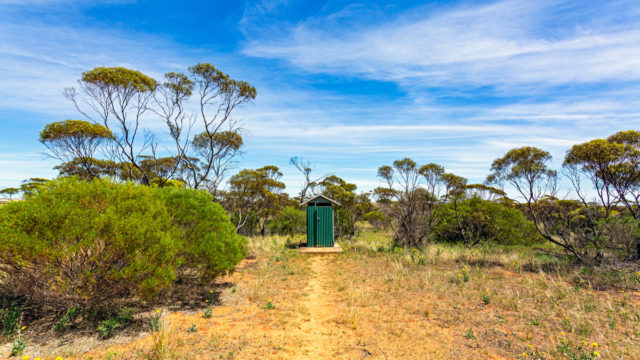- Dundas Mining shares have charged on reports of visual sulphides at its Central prospect, 120km southwest of the famous Nova nickel-copper mine
- The company first identified massive sulphides and pyrite by surprise in a hole drilled to find water
- Investors are piling in early in the hope assays point to a major new discovery
Since a nearly broke Sirius Resources made the Nova nickel-copper discovery in July 2012 hundreds of millions have been spent, unsuccessfully, looking for something that suggests the vast expanse of the Fraser Range in the Eastern Goldfields could host a nickel district to rival WA’s Kambalda, Canada’s Voisey’s Bay, China’s Jinchuan and Russia’s Norilsk.
Billionaire prospector Mark Creasy found Silver Knight, later bought by Nova’s multi-commodity major owner IGO (ASX:IGO).
Interesting, but too small, too low grade to be any more than an add-on to the rapidly ageing 30,000tpa Nova-Bollinger deposit.
Legend Mining (ASX:LEG), also backed by Creasy, has had some sniffs at its Mawson discovery, but nothing concrete.
Many companies, floated in the highly-charged aftermath of the initial Nova hit, have turned their attention away from the once popular exploration postcode entirely.
Since then nickel, copper and cobalt prices have surged on the back of their emergence as major ingredients in EV batteries and the “energy transition”.
But when Dundas Minerals (ASX:DUN) listed last year, it’s fair to say making the Fraser Range its flagship focus wasn’t as fashionable as new nearology buzz words like ‘Julimar’ or ‘Hemi’.
But like the return of vinyl and trading cards, everything that was once old is new again, and so far Dundas’ decision to go against the grain has paid off.
It first captured the attention of the market last month with the unexpected discovery of 20m of massive sulphides and pyrite with anomalous nickel, copper, cobalt and silver in one of three holes drilled looking not for nickel but for drilling water at the remote project northeast of the coastal farming town of Esperance.
That excitement was trumped with the first diamond hole yesterday.
358m of massive, semi-massive and disseminated sulphides
Dundas shares surged by 23.6% yesterday, down from a barnstorming 40%+ intraday, after a first 423m long diamond hole into one of two major aerial electro-magnetic conductors returned a veritable cavalcade of visual sulphide mineralisation.
The drilling encountered 358m of visual sulphides, with massive, semi-massive and disseminated sulphides from 32m to 423m and sulphide in quartz veins from 43.5m to 412.1m.
Suphide mineralisation is regularly, but not always, a good indication for nickel, copper and cobalt rich rocks.
Portable XRF readings in the first 25m were highly anomalous for silver with a highest reading of 56ppm, with a number of anomalous readings in cobalt, copper, zinc, molybdenum and silver, with a highest pXRF reading for nickel of 558ppm.
For the uninitiated, it doesn’t mean you have anything special. As Dundas noted in its report yesterday: “In relation to the disclosure of visual mineralisation in this announcement, the Company cautions that visual estimates of sulphide abundance should never be considered a proxy or substitute for laboratory analysis.”
In other words, don’t punt your life savings on it.
But it does inspire some front running from investors keen to get their foot in the door before a potential discovery.
“That’s for the market to judge, the assays will come,” Dundas Minerals managing director Shane Volk told Stockhead.
“I think the big takeaway is that we think we’re in a big system, the assays from not just this hole, but from the pending holes that we’re about to drill in the program, it’ll be the culmination of the results from all of these holes that determine how fertile this system is.
“From what we’ve seen to date, and it’s only one hole in what we think is a very, very large system, the architecture and the visuals are really encouraging.
“We can’t control what comes out of the assays, but what we can do is target the holes at the most conductive and the area of this system that we think will give us the best result.”
‘It’s still early days’
Volk is quick to caution that it is still early days at the project, 120km southwest of Nova on the other side of the Dundas Nature Reserve.
Yesterday’s hole was the first of four planned in a 2000m program, which is almost certain to be expanded.
The next hole will be drilled vertically into a second major conductor identified in AMT surveys at the Central Ni-Cu target.
Geophysical info for Nova, which was found with the assistance of a WA Government Exploration Incentive Scheme grant, is now open file, with Dundas saying a review had found its Central and Matilda South prospects were comparable with modelling of gravity and magnetic data covering the Nova ultramafic-mafic intrusion.
It remains too early to say if the ‘next Nova’ egg has been cracked, a challenge for Australian explorers that has become a modern day Lasseter’s Reef.
Volk insists Dundas is taking a ‘different approach’ to exploration in the Fraser Range though.
“I’m not that familiar with what others have been doing, but I know that there have been quite a lot of positive indications of another Nova style deposit throughout the areas of the Albany-Fraser,” he said.
“Silver Knight was discovered by the Creasy Group, which has now been purchased by IGO.
“The techniques we’re using are somewhat different. We’re using techniques that have been proven to work in areas such as Canada, under cover areas around some of the great deposits there like Voisey’s bay and the Thompson belt or so.”
So far those targets have been hit in drilling, even if it was initially by accident.
The first assays from the water holes are expected back in around a week, the even more anticipated results from the diamond drilling will likely be five to six weeks given long delays currently being seen in analytical labs.
Given gold is found in concentrations too small to be identified by XRF, the assays will give a sense of the precious metals potential of the Central Prospect as well.
“We do have the assays coming in for the water bore holes and they should only be a week or so away, so that will give us a good indication especially on the potential for gold mineralisation, because there was a lot of pyrite in those holes and those holes did have anomalies for silver with the XRF gun,” Volk said.
“So we’re hopeful that there will be some gold mineralisation in those water bore holes which should all go well for possible gold mineralisation in this diamond hole number 1 also.”
As William Bell once said, you don’t miss your water when there could be copper in the well.
A wild nickel mine appears
Like stumbling on a wild Pikachu in the brush outside Pallet Town sometimes you make discoveries in the strangest places.
A nickel find in a water hole, or as our geo in residence Guy Le Page has suggested a “long drop” (plop), certainly wouldn’t be unheard of.
A few years ago Great Boulder Resources (ASX:GBR) lit up the market with a copper hit in an old water bore hole drilled by Gold Road Resources in the Yamarna Belt.
Sometimes you find minerals where you expected, but not exactly what you were looking for.
Robert Friedland and Jean-Raymond Boulle struck it lucky at Voisey’s Bay, later sold to Inco and now part of Vale.
They were looking for diamonds in Canada’s remote Labrador frontier when they discovered the mega nickel deposit.
Creasy himself originally pegged his vast tenement package on the Fraser Range looking for space junk from the SkyLab crash near Esperance in 1979.
(Those are the nice ones. Boulle once claimed $5 billion of diamonds were sitting in an abandoned diamond mine in a State Park in Arkansas. It was worthless, but I digress.)
At the very least, the excitement around Dundas’ potential discovery will likely solve a funding problem juniors tend to encounter after their IPO exploration plans are carried out.
Generally they need to head to the market for more cash to keep it going, diluting original investors who can’t afford to or aren’t interested in topping up their investment.
Dundas never traded above 20c before the start of September. It is now up 561.5% year to date at 86c.
That means scores of options are now in the money, giving the company a steady flow of finance to keep up the pace of drilling if it finds something good.
“By the end of this year, I would expect to have in the range of somewhere between 1.5 and $2 million in the bank,” Volk said.
“I’ve got $9 million worth of options to be exercised that are listed and another $3 million, so I’ve got $12 million worth of options to come in the door.
“Conceptually, depending on the exercise of those, we’re pretty well funded going forward to not just complete this program, but to complete further programs.
“What it means is that if we can continue on this path using the options money, then we can delay any capital raise until we think that the company is more correctly priced for the system we think we have and any future upside.”
Dundas Mining (ASX:DUN) share price today:
You might be interested in












